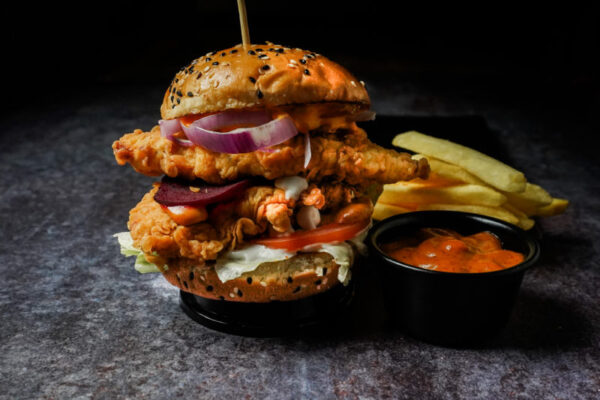The hamburger is an iconic dish loved by millions of people all over the world. The combination of a meat patty, lettuce, tomato, and bread is so simple, yet so delicious. But do you know the history and evolution of this American classic?
Origins
The origins of the hamburger can be traced back to the 19th century. Some believe that the idea of putting meat between two slices of bread came from the German city of Hamburg, where a dish called “Rundstück warm” was popular. This dish was made up of a warm steak served between two bread slices.

However, the modern hamburger as we know it today was invented in the United States. There are many claims about who first created it, but most agree that it was invented sometime in the early 1900s. One of the most popular stories is that of Louis Lassen, a Danish immigrant who owned a lunch wagon in New Haven, Connecticut. In 1900, he created a sandwich featuring a ground beef patty between two slices of bread, which he called the “hamburger”.
Evolution
Since its creation, the hamburger has evolved and changed in many ways. In the early 1900s, hamburgers were typically sold from carts and stalls on city streets. They were seen as a quick and easy meal for the working class. Over time, hamburgers became a staple at diners and fast-food restaurants, where they were often served with fries and a drink.
In the 1950s and 1960s, the hamburger became a symbol of American culture, and fast-food chains like McDonald’s and Burger King began to dominate the market. These chains standardized the burger, making it more consistent and easier to produce in large quantities.
Recently, there has been a move towards gourmet burgers, with many restaurants and food trucks offering unique and creative versions of the classic burger. From artisanal buns to unusual toppings like foie gras, truffle oil, and even peanut butter, the modern hamburger has come a long way from its humble origins.

The Future of the Hamburger
As people become more health-conscious, there has been a growing demand for healthier and more sustainable burger options. Many restaurants and fast-food chains are now offering plant-based burgers made from ingredients like soy, mushrooms, and beetroot. These burgers aim to provide the same taste and texture as traditional burgers but with a smaller environmental footprint.
Overall, the hamburger has had a long and fascinating journey throughout history, from its humble roots as a street food to its current status as an American icon. No matter how it evolves in the future, it will always hold a special place in our hearts (and stomachs).




